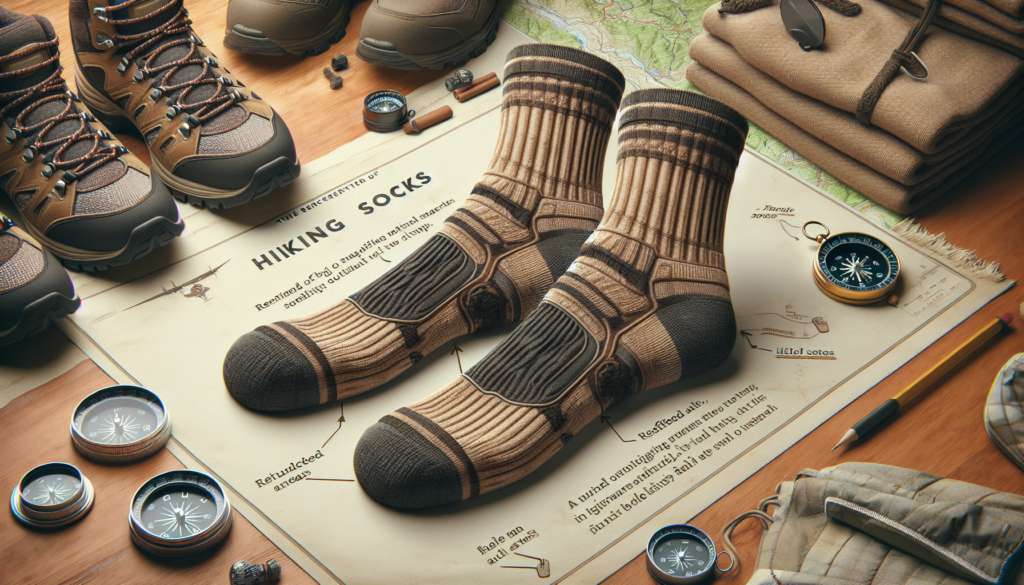The Ultimate Guide to Hiking Socks: Your Essential Companion on the Trails
When it comes to outdoor activities like hiking, having the right gear can make all the difference between a pleasant adventure and a painful experience. While many hikers focus on choosing the right boots and backpack, one item that often gets overlooked but plays a crucial role in ensuring comfort and performance on the trails is hiking socks. In this comprehensive guide, we will delve deep into the world of hiking socks, exploring their importance, different types, materials, and other essential factors to consider. So, lace up your boots, grab your backpack, and let’s step into the fascinating world of hiking socks.
The Importance of Hiking Socks
When embarking on a hiking trip, your feet are your most valuable asset. They bear the brunt of the miles you cover, the terrain you navigate, and the weight of your pack. Hiking socks act as a crucial barrier between your feet and your boots, providing cushioning, support, and moisture-wicking properties to keep your feet dry and comfortable throughout your hike. A good pair of hiking socks can prevent blisters, hot spots, and other foot issues, allowing you to focus on enjoying the great outdoors.
One of the key benefits of hiking socks is their ability to manage moisture. As you hike, your feet sweat, and if that moisture is not effectively wicked away, it can lead to blisters and discomfort. Hiking socks are designed to wick moisture away from your skin, keeping your feet dry and reducing the risk of friction-related injuries. Additionally, the cushioning provided by hiking socks helps to absorb shock and impact, protecting your feet from the strain of long hours on the trail.
Types of Hiking Socks
There are several types of hiking socks available on the market, each designed for specific purposes and preferences. The most common types of hiking socks include:
1. Crew Socks
Crew socks are the standard length for hiking socks, typically extending a few inches above the ankle. They provide moderate coverage and are suitable for most hiking conditions. Crew socks offer a good balance of cushioning, breathability, and support, making them a versatile choice for hikers of all levels.

2. Quarter-Length Socks
Quarter-length socks are shorter than crew socks, typically resting just above the ankle bone. These socks are a popular choice for warm weather hiking or for hikers who prefer a lower profile sock. Quarter-length socks offer less coverage than crew socks but still provide cushioning and support for the foot.
3. Over-the-Calf Socks
Over-the-calf socks extend well above the calf muscle, providing maximum coverage and protection. These socks are ideal for hikers who want extra support and insulation, especially in cold weather or when wearing tall boots. Over-the-calf socks offer additional cushioning and can help prevent debris from getting inside your boots.

Materials Used in Hiking Socks
Hiking socks are made from a variety of materials, each with its unique properties and benefits. The most common materials used in hiking socks include:
1. Merino Wool
Merino wool is a popular choice for hiking socks due to its natural moisture-wicking properties and ability to regulate temperature. Merino wool socks are soft, breathable, and odor-resistant, making them a comfortable and practical option for long hikes in varying conditions.
2. Synthetic Fibers
Synthetic fibers such as nylon, polyester, and spandex are often blended with other materials to enhance durability, stretch, and moisture-wicking capabilities. Synthetic hiking socks are lightweight, quick-drying, and resistant to abrasion, making them a popular choice for high-performance activities.
3. Blends
Some hiking socks are made from a blend of materials, combining the benefits of different fibers to create a versatile and effective sock. Blended socks may include a mix of merino wool, synthetic fibers, and other materials to achieve the desired balance of comfort, performance, and durability.
Choosing the Right Hiking Socks
When selecting hiking socks, there are several factors to consider to ensure you choose the right pair for your needs. Some key considerations include:
1. Activity Level
Consider the intensity and duration of your hikes when choosing hiking socks. For longer hikes or more challenging terrain, opt for socks with extra cushioning and support. If you are a casual hiker or prefer shorter outings, a lighter-weight sock may be sufficient.
2. Weather Conditions
Take into account the weather conditions you are likely to encounter on your hikes. For hot weather, choose socks with good breathability and moisture-wicking properties. In cold weather, opt for socks with added insulation to keep your feet warm and dry.
3. Fit and Comfort
Ensure that your hiking socks fit well and feel comfortable on your feet. Look for socks with a snug but not tight fit, as excess material can cause rubbing and blisters. Consider features like cushioning, arch support, and seamless toes for added comfort.
4. Durability
Invest in high-quality hiking socks that are built to last. Look for reinforced heels and toes, as these areas tend to experience the most wear and tear. Consider the construction and stitching of the socks to ensure they can withstand the rigors of hiking.
Expert Opinions
We reached out to hiking experts and enthusiasts to get their take on the importance of hiking socks. Here’s what they had to say:
“Hiking socks can make or break your hiking experience. A good pair of socks can prevent blisters, regulate temperature, and provide the support you need to keep going mile after mile.” – John, avid hiker
“I never skimp on hiking socks. Investing in quality socks is just as important as investing in good boots. Your feet will thank you in the long run.” – Sarah, experienced backpacker
Common Misconceptions
Despite their importance, hiking socks are often overlooked or underestimated by hikers. Here are some common misconceptions about hiking socks:
1. Thicker Socks Are Always Better
While thicker socks provide more cushioning, they may not be necessary for all hiking conditions. Thicker socks can lead to overheating and may not fit well in some boots, causing discomfort. Choose socks based on the activity and weather conditions to find the right balance of thickness and comfort.
2. Any Socks Will Do
Not all socks are created equal, especially when it comes to hiking. Regular cotton socks are not suitable for hiking, as they retain moisture and can cause blisters. Invest in specialized hiking socks that are designed to meet the unique demands of outdoor activities.
Conclusion
In conclusion, hiking socks are a fundamental piece of gear that should not be overlooked when preparing for a hiking trip. The right pair of hiking socks can enhance your comfort, protect your feet, and improve your overall hiking experience. By understanding the different types of hiking socks, materials used, and key factors to consider, you can make an informed decision and choose the best socks for your needs.
So, next time you hit the trails, remember to lace up with a quality pair of hiking socks. Your feet will thank you!

